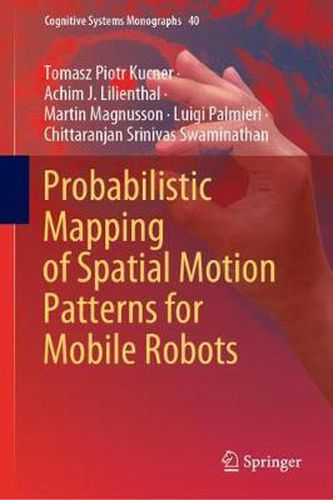Readings Newsletter
Become a Readings Member to make your shopping experience even easier.
Sign in or sign up for free!
You’re not far away from qualifying for FREE standard shipping within Australia
You’ve qualified for FREE standard shipping within Australia
The cart is loading…






This title is printed to order. This book may have been self-published. If so, we cannot guarantee the quality of the content. In the main most books will have gone through the editing process however some may not. We therefore suggest that you be aware of this before ordering this book. If in doubt check either the author or publisher’s details as we are unable to accept any returns unless they are faulty. Please contact us if you have any questions.
This book describes how robots can make sense of motion in their surroundings and use the patterns they observe to blend in better in dynamic environments shared with humans.The world around us is constantly changing. Nonetheless, we can find our way and aren’t overwhelmed by all the buzz, since motion often follows discernible patterns. Just like humans, robots need to understand the patterns behind the dynamics in their surroundings to be able to efficiently operate e.g. in a busy airport. Yet robotic mapping has traditionally been based on the static world assumption, which disregards motion altogether. In this book, the authors describe how robots can instead explicitly learn patterns of dynamic change from observations, store those patterns in Maps of Dynamics (MoDs), and use MoDs to plan less intrusive, safer and more efficient paths. The authors discuss the pros and cons of recently introduced MoDs and approaches to MoD-informed motion planning, and provide an outlook on future work in this emerging, fascinating field.
$9.00 standard shipping within Australia
FREE standard shipping within Australia for orders over $100.00
Express & International shipping calculated at checkout
This title is printed to order. This book may have been self-published. If so, we cannot guarantee the quality of the content. In the main most books will have gone through the editing process however some may not. We therefore suggest that you be aware of this before ordering this book. If in doubt check either the author or publisher’s details as we are unable to accept any returns unless they are faulty. Please contact us if you have any questions.
This book describes how robots can make sense of motion in their surroundings and use the patterns they observe to blend in better in dynamic environments shared with humans.The world around us is constantly changing. Nonetheless, we can find our way and aren’t overwhelmed by all the buzz, since motion often follows discernible patterns. Just like humans, robots need to understand the patterns behind the dynamics in their surroundings to be able to efficiently operate e.g. in a busy airport. Yet robotic mapping has traditionally been based on the static world assumption, which disregards motion altogether. In this book, the authors describe how robots can instead explicitly learn patterns of dynamic change from observations, store those patterns in Maps of Dynamics (MoDs), and use MoDs to plan less intrusive, safer and more efficient paths. The authors discuss the pros and cons of recently introduced MoDs and approaches to MoD-informed motion planning, and provide an outlook on future work in this emerging, fascinating field.